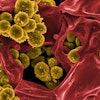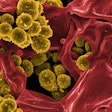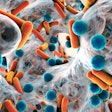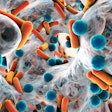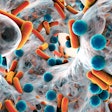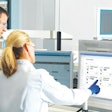
Researchers have developed a fast, cheap, and simple method for detecting antimicrobial resistance that could prove particularly attractive in lower-income countries.
Conventional antibiotic sensitivity testing (AST) requires scientists to culture microorganisms and then expose them to antibiotics. The culture step means the process can take 24 hours or more, depending on how quickly the bacteria grow. Emerging approaches such as metagenomic sequencing accelerate the process but require specialized and, in some cases, expensive equipment not routinely found in labs.
Writing in PNAS, researchers at Ecole Polytechnique Fédérale de Lausanne (EPFLP) in Switzerland discuss their work to develop a method for quickly determining if a pathogen is sensitive to an antibiotic using basic equipment.
“We have developed a technique in our laboratories that allows us to obtain an antibiogram within two to four hours, instead of the current 24 hours for the most common germs and one month for tuberculosis,” Dr. Sandor Kasas of EPFL said in a statement.
The method requires a very basic microfluidic analysis chamber, an optical microscope equipped with a camera or a mobile phone, and dedicated data analysis software. The approach relies on the fact that nanoscale vibrations indicate whether a bacterium is alive. When the bacterium dies, the vibrations stop. Using the equipment, the researchers detected the cessation of vibration upon exposure to antibiotics.
Kasas and his collaborators said they had identified nanoscale vibrations as a “signature of life” in a 2014 paper; a subsequent project showed that the signature could be used to quickly determine susceptibility to antibiotics. A 2020 paper found that a simplified set-up could detect the motion of yeast, pointing to applications in the assessment of antifungal susceptibility.
The latest study expands the utility of the approach by applying the simplified approach to bacteria. Specifically, the researchers used the technique to determine if Escherichia coli, Staphylococcus aureus, Lactobacillus rhamnosus, and Mycobacterium smegmatis are sensitive to the antibiotics ampicillin, streptomycin, doxycycline, and vancomycin.
Monitoring a sensitive E. coli strain after exposure to ampicillin revealed a statistically significant decline in its average nanomotion within two hours. The nanomotion of the drug-resistant stain was unchanged. Similarly, the average nanomotion of M. smegmatis fell after five hours of incubation with streptomycin.
“The present technique is rapid, extremely simple to set up, possesses a single-cell sensitivity, is attachment- and label-free, and significantly faster and cheaper than other existing fast AST methods. Importantly, it is independent of the bacterial replication rate, the structure of their cell wall, or motility. Its simplicity opens novel avenues to fast AST, specifically in developing countries,” the authors wrote.
